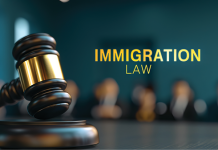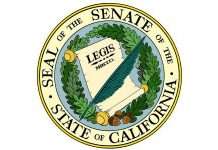In this episode of The Workplace, CalChamber employment law expert Matthew Roberts and CalChamber Labor and Employment Vice President Bianca Saad discuss the latest changes to California’s universal indoor mask requirement and its impact on the workplace.
Background
California’s universal mask requirement expired on February 15, and the California Department of Public Health (CDPH) released new guidance that began to take effect February 16, Roberts explains.
When the CDPH implemented the universal indoor face covering requirement in December 2021, there was much confusion over whether it applied to workplaces or if the requirement was meant for the general public.
Another issue with the CDPH order was that it differed from the California Division of Occupational Safety and Health (Cal/OSHA) workplace rules which gave different rules on face coverings based upon vaccination status. After some time, Roberts continues, the CDPH finally confirmed that its mandate applied to private businesses, even those that weren’t open to the public. Through an FAQ, Cal/OSHA also clarified that in addition to their requirements, employers must also provide and ensure use of face coverings in any situation where it is required by the CDPH.
Now, two months later, the CDPH rules are changing again.
New Changes
Under the new CDPH rules, California is allowing vaccinated individuals to not wear a face covering indoors, Saad says, though they are still recommended to wear a face covering indoors when the risk is high. Unvaccinated individuals on the other hand are still required to wear a face covering indoors.
So how are businesses open to the public going to determine who is vaccinated?
There are a few different options. Saad says businesses can:
- Provide the information on the rules and allow patrons to self-attest their vaccination status;
- Verify the vaccination status of any patron; or
- Continue to require that all individuals on their premises wear face coverings.
Under the new CDPH guidelines, face coverings are still going to be required, regardless of vaccination status, in certain settings such as public transportation, school settings, health care, and long-term care settings, she explains.
Impact on Workplace
Employees who are not fully vaccinated will still need to wear a face covering indoors and in vehicles.
Saad clarifies that being “fully vaccinated” means that the person has received a complete series of a COVID-19 vaccine, whether it’s a one dose or two dose vaccine. Boosters are not included in the definition.
To treat an employee as fully vaccinated, the employer must have some documentation. Options include: having a copy of the employee’s vaccination record; verifying the documentation and keeping a record of the fact that the documentation has been verified; or allowing employees to self-attest to their vaccination status and keeping documentation of that self-attestation. All of these records must be kept confidential.
Verifying vaccination status is something that employers have had to do since last summer, so some employers may have already done this, Roberts points out. For employers who have not verified this yet, verifying vaccination status can help figure out where you fall within mask guidance rules.
Mask Exceptions
Saad says the rules do recognize medical accommodations, so if someone has a medical condition that prevents them from wearing a face covering, documentation will need to be provided. The person will need to have an alternative to a face mask, such as a shield with a neck drape. The Cal/OSHA emergency temporary standard addresses this situation here.
A mask is not required when an employee:
- Is eating or drinking;
- Is six feet apart from someone else;
- Is outside; or
- Is alone in a room or vehicle.
Potential Issues with Workplace Policies
As employers weigh their compliance options, there are some important things they will need to consider, Saad says.
If an employer decides to allow vaccinated employees to not wear a mask, then it will be assumed that anyone wearing a face covering is unvaccinated, and this may cause some conflict. Some employees, for various reasons, may choose to wear a face covering even though they are fully vaccinated, and no employee should be prohibited or discouraged from wearing a face covering, she says. So some employers may choose to keep the face mask requirement for everyone, regardless of vaccination status, to avoid workplace conflict.
Under this type of policy, Roberts asks, what can employer do if a vaccinated employee refuses to wear a mask?
In that scenario, Saad replies, an employer can treat it as they would any other company policy and subject the employee to discipline or termination because the employee failed to comply with company policy.
Local Health Department Rules
If an employer’s local health department has not lifted its mask requirements and they are stricter than the CDPH’s new rules, employers will need to follow their local health department rules, Saad says.
Santa Clara County, for example, has announced that despite the state’s lifting of the indoor masking requirements, they will not be lifting their own indoor masking requirements until they meet certain metrics as they relate to vaccination hospitalizations and COVID-19 case rates.
Los Angeles County has a similar practice in place right now that continues to require indoor masking, regardless of vaccination status. And they also have a specific requirement for employers as far as providing a particular kind of face covering for their employees, Saad says.
“So that’s another example of where these local jurisdictions do go above and beyond what the state requires, and the employer is going to want to make sure to follow those local orders,” she says.
As the state starts moving into an endemic plan, employers will need to closely monitor their local health department’s orders on these issues, Roberts stresses.


